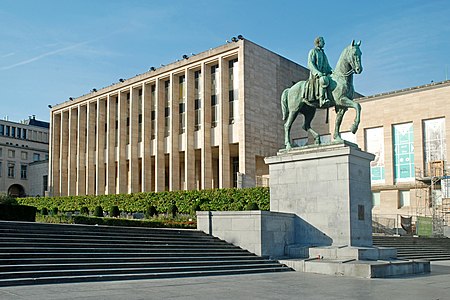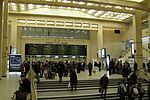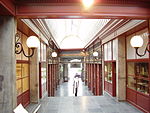Royal Library of Belgium

The Royal Library of Belgium (French: Bibliothèque royale de Belgique, Dutch: Koninklijke Bibliotheek van België, abbreviated KBR and sometimes nicknamed Albertine in French or Albertina in Dutch) is the national library of Belgium. The library has a history that goes back to the age of the Dukes of Burgundy. In the second half of the 20th century, a new building was constructed on the Mont des Arts in central Brussels, near the Central Station. The library owns several collections of historical importance, like the famous Fétis archives, and is the depository for all books ever published in Belgium or abroad by Belgian authors. There are four million bound volumes in the Royal Library, including a rare book collection numbering 45,000 works. The library has more than 700,000 engravings and drawings, 150,000 maps and plans, and more than 250,000 objects, from coins to scales to monetary weights. This coin collection holds one of the most valuable coins in the field of numismatics, a fifth-century Sicilian tetradrachm. The library also houses the Center for American Studies, a rich American Studies collection of 30,000 books in open stacks, as well as U.S. newspapers and databases.The Royal Library is open for reference only. Patrons must be at least eighteen years of age and must pay an annual membership fee.
Excerpt from the Wikipedia article Royal Library of Belgium (License: CC BY-SA 3.0, Authors, Images).Royal Library of Belgium
Boulevard Pachéco - Pachecolaan, City of Brussels Pentagon (Brussels)
Geographical coordinates (GPS) Address Nearby Places Show on map
Geographical coordinates (GPS)
| Latitude | Longitude |
|---|---|
| N 50.844444444444 ° | E 4.3563888888889 ° |
Address
Jonction Nord-Midi - Noord-Zuidverbinding
Boulevard Pachéco - Pachecolaan
1000 City of Brussels, Pentagon (Brussels)
Belgium
Open on Google Maps











